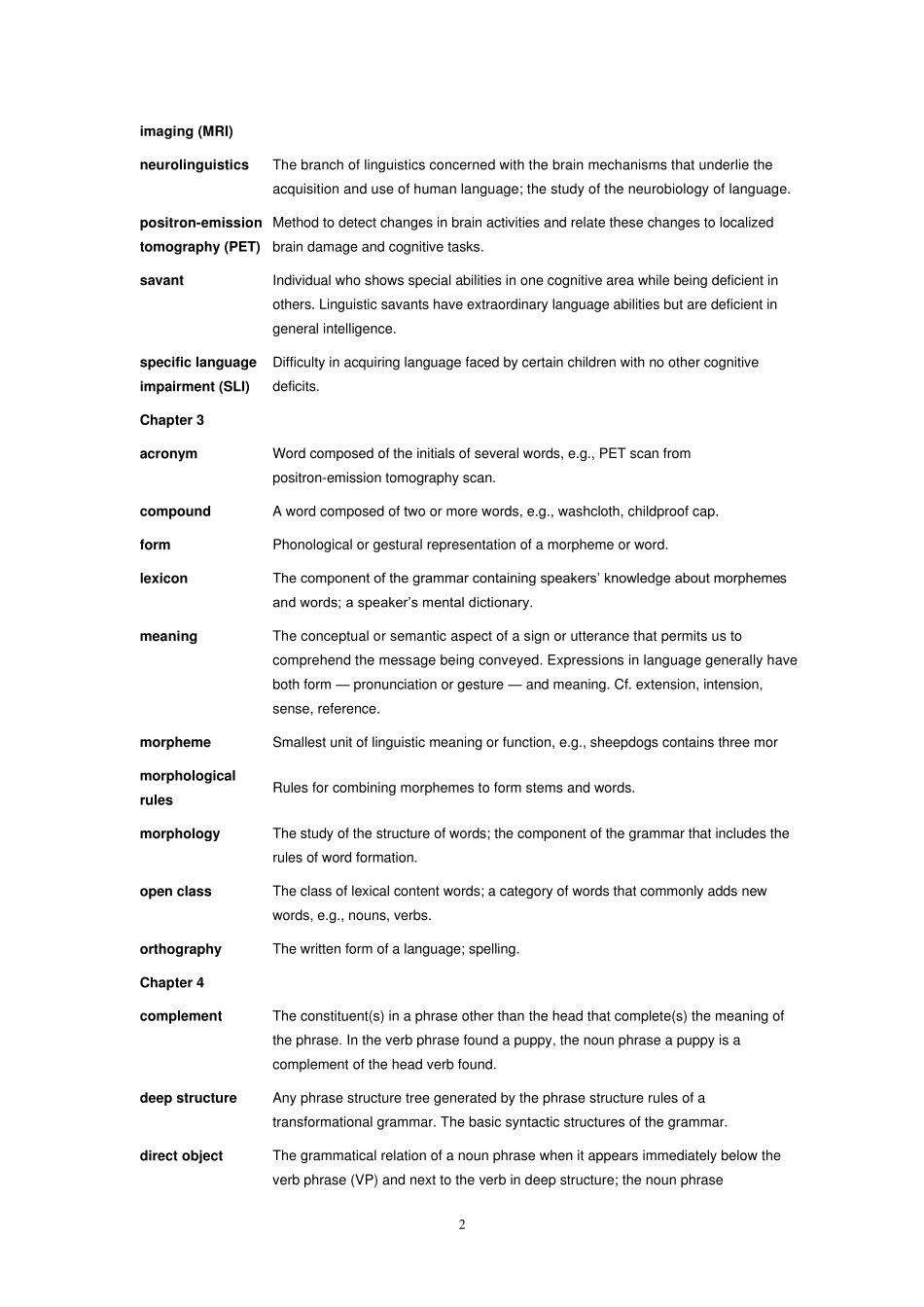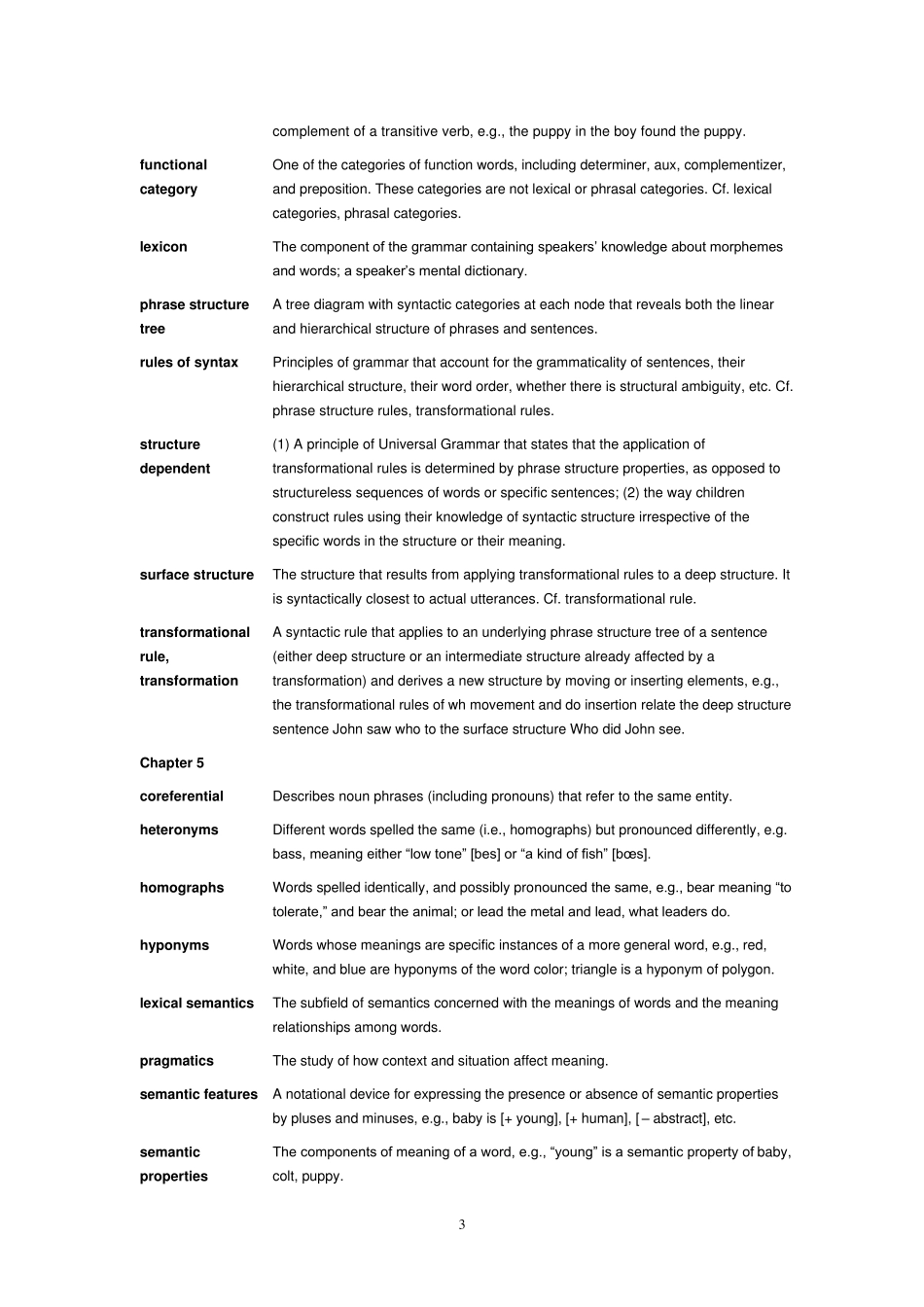1 Chapter 1 arbitrary Describes the property of language, including sign language, whereby there is no natural or intrinsic relationship between the way a word is pronounced (or signed) and its meaning. descriptive grammar A linguist’s description or model of the mental grammar, including the units, structures, and rules. An explicit statement of what speakers know about their language. Cf. prescriptive grammar, teaching grammar. grammar The mental representation of a speaker’s linguistic competence; what a speaker knows about a language, including its phonology, morphology, syntax, semantics, and lexicon. A linguistic description of a speaker’s mental grammar. lexicon The component of the grammar containing speakers’ knowledge about morphemes and words; a speaker’s mental dictionary. morphology The study of the structure of words; the component of the grammar that includes the rules of word formation. phonology The sound system of a language; the component of a grammar that includes the inventory of sounds (phonetic and phonemic units) and rules for their combination and pronunciation; the study of the sound systems of all languages. semantics The study of the linguistic meaning of morphemes, words, phrases, and sentences. sign languages The languages used by deaf people in which linguistic units such as morphemes and words as well as grammatical relations are formed by manual and other body movements. syntax The rules of sentence formation; the component of the mental grammar that represents speakers’ knowledge of the structure of phrases and sentences. Universal Grammar (UG) The innate principles and properties that pertain to the grammars of all human languages. Chapter 2 anomia A form of aphasia ...


